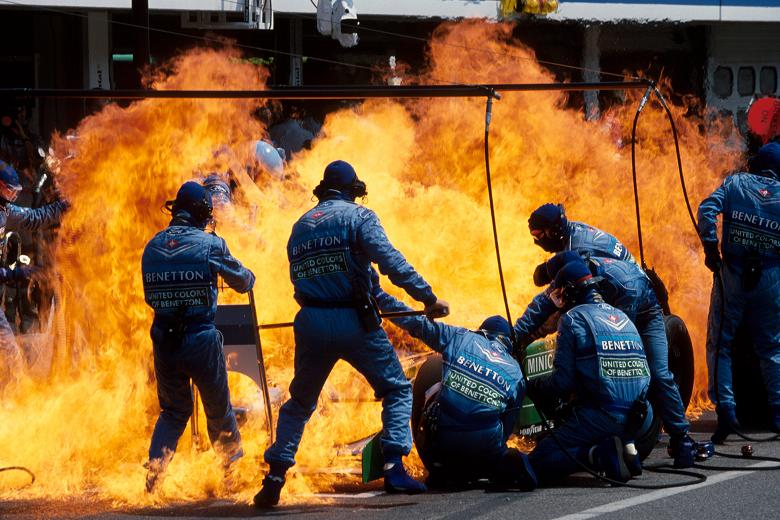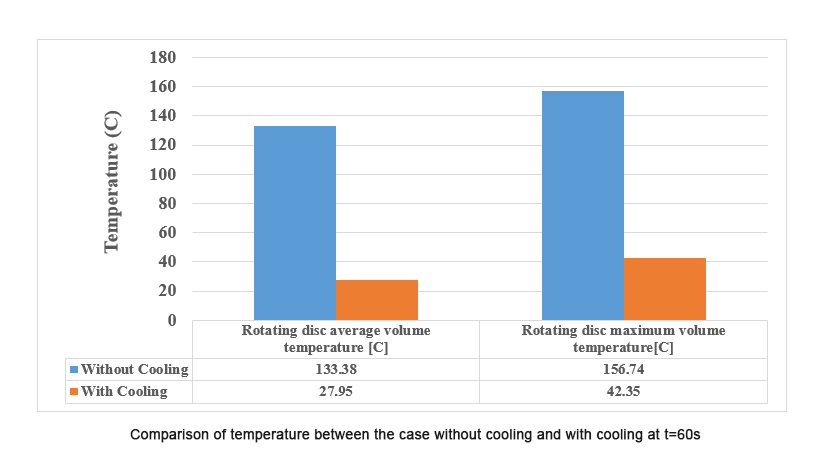OGAB® motorsport Sustainable Braking
The patented Ogab® Sustainable Braking system utilises Active Flow Control technology to offer optimised brake performance temperatures and improved driver safety in motorsport. Powered by energy that would otherwise be lost it contains no moving parts and is fully compliant with F1 regulations.

The first ever system that prevents maximum peak temperature of the disc rotor via active air cooling technology.
Offering optimised braking temperatures for maximum performance and improved safety.
Including our breakthrough particle capturing technology to prevent harmful brake dust entering the atmosphere.
Ogab®‘s Sustainable Braking system prolongs the life of the disc brake and prevents the extreme impact of temperature through friction to avoid critical mechanical failures.
The system is powered by energy that would otherwise be lost and is fully compliant with Motorsport regulations, as it contains no moving parts.
The action of braking generates massive amounts of heat, and brake components have a relatively narrow temperature window within which they can operate; their performance degrades drastically when they exceed their maximum temperature rating. Brake rotors (ie brake discs) are usually designed to dissipate heat.
Aerodynamic cooling of brake discs through convection is the primary mechanism by which it cools the brake discs; however, in vehicles having a wheel well (such as cars) and in vehicles where the brake rotors are disposed within the barrel of the wheel, the air around the brake discs is turbulent and relatively slow-moving.
For instance, when compared to the speed of the vehicle). This causes a heat build-up around the brake components and diminishes their ability to shed that heat. By applying air from a high-pressure source, this will allow the brakes to shed heat at a faster rate and dramatically lowers the average operating temperature.
Active cooling takes place via air knives injecting direct to the disc.
Capturing brakewear using our innovative partculate capture vessel (PCV)
Enclosed brake assembley with amplified suction to PSV.
In Formula 1, where the cars reach up to 375km/h (233mph) speeds, braking at these speeds can cause phenomenal temperatures in the brakes. Many circuits that are raced on contain numerous corners in succession, meaning brakes are used repetitively. This causes the brakes to get hotter and hotter without a chance to cool, if left unchecked, the brakes will cease to function properly.
Lower speed circuits such as Monaco demonstrate where it’s not always high speed and harsh braking that cause brakes to overheat, but also heat build-up over frequent use.
Improving Safety in Motorsport with Sustainable Braking
Safety in Motorsport is of paramount importance and its governing body, the FIA, are constantly striving to improve standards in this area.

With the packaging of the racing cars being configured with components very close together due to limited available space, it is unfortunately always likely that the leaked fuel can contact a high temperature surface that causes an ignition.

Through our innovative R & D program we have achieved very encouraging test results via CFD analysis that show peak temperature of the disc being reduced to a safe level within less than 30 seconds.
CFD Analysis Results
We achieve the following results from 60 seconds of cooling, with 4 seconds of intense braking (cooling is active during braking) and 56 seconds of further cooling.
Deploying the cooling technology proves to be effective as it reduces the rotating disc average volume temperature from 208.02C to 188.84 (9.22% improvement) while the maximum disc volume temperature reduces from 527.21C to 505.37C (4.14% improvement) during the 4 seconds of braking. The suggested cooling technology provided excellent results after 60 seconds as highlighted by the results below.
With such technology, it was possible to reduce the brake disc average volume temperature from 133.38C to 27.95C (79.04% improvement) while the maximum disc volume temperature reduces from 156.74C to 42.35C (72.98% improvement).
CFD Analysis - Without Cooling
CFD Analysis - With Cooling
Results Chart

There is substantial improvement in terms of reducing the disc temperature by deploying the cooling technology. For the case without cooling, the majority of the disc temperature is in the range of 120C to 150C while for the case with cooling, the majority of the disc temperature is in the range of 20C to 30C. This highlights that by allowing the cooling system to be operative only for a few seconds after braking, it is possible to remarkably reduce the rotating disc temperature.
It should be noted that the proposed cooling technology was deployed to an existing brake system design. Therefore, its performance was limited by the nature of the current brake systems configuration. Considering the proposed cooling technology during the design process of new brake system, assemblies can enhance the cooling performance even further and provide a more integrated configuration of the brake system (i.e. embedded cooling with brake system).
Get the full facts and insight on the brake disc product life cycle
Ogab® can help make a change for the better. Contact us today to enquire about our Sustainable Braking technology and how it can help you.
